When it hurts to sit down. Coccydynia: Causes, Symptoms, and Effective Management Strategies for Tailbone Pain
What causes coccydynia. How can tailbone pain be managed effectively. What are the risk factors for developing coccydynia. How does childbirth contribute to tailbone pain. What lifestyle changes can help alleviate coccydynia symptoms.
Understanding Coccydynia: A Comprehensive Overview of Tailbone Pain
Coccydynia, commonly known as tailbone pain, is a condition that causes discomfort at the base of the spine, particularly when sitting. This condition can significantly impact an individual’s quality of life, making everyday activities challenging. Let’s delve into the intricacies of coccydynia to better understand its causes, symptoms, and management strategies.
What is Coccydynia?
Coccydynia refers to pain in the coccyx or the surrounding tissue. The coccyx, also known as the tailbone, is located at the very bottom of the spine. When damaged or irritated, it can lead to persistent pain, especially when pressure is applied, such as during sitting.

How Common is Coccydynia?
While exact prevalence rates are difficult to determine, coccydynia is a relatively common condition. It affects people of all ages and genders, though it is more frequently reported in women, particularly those who have given birth.
Primary Causes of Coccydynia: From Childbirth to Trauma
Understanding the root causes of coccydynia is crucial for effective management and prevention. Let’s explore the primary factors that can lead to this painful condition:
Childbirth and Its Impact on the Coccyx
Childbirth is one of the most common causes of coccydynia. During pregnancy, the coccyx becomes more flexible to accommodate the birthing process. However, this increased flexibility can sometimes lead to overstretching of the surrounding muscles and ligaments, resulting in pain and discomfort postpartum.
Trauma and Injury to the Tailbone
Direct trauma to the coccyx is another frequent cause of coccydynia. This can occur due to various incidents:
- Falls, especially falling backwards onto a hard surface
- Sports-related injuries, particularly in contact sports
- Accidents that result in a forceful impact to the base of the spine
In most cases of injury, the coccyx is usually bruised. However, more severe impacts can lead to dislocation or fracture of the tailbone.

Repetitive Strain and Overuse
Certain activities that involve repetitive motion or prolonged pressure on the coccyx can lead to coccydynia. This is often seen in:
- Cyclists who spend long hours on a bicycle seat
- Rowers who consistently lean forward, stretching the base of the spine
- Office workers who sit for extended periods
These repetitive actions can strain and stretch the muscles and ligaments around the coccyx, potentially causing permanent damage and chronic pain.
Lifestyle Factors Contributing to Coccydynia: Posture, Weight, and Age
While trauma and childbirth are significant causes of coccydynia, several lifestyle factors can also contribute to or exacerbate the condition:
The Role of Posture in Tailbone Pain
Poor posture, especially when sitting for long periods, can put undue pressure on the coccyx. This is particularly relevant in today’s sedentary lifestyle, where many people spend hours sitting at desks or in vehicles.
Weight as a Factor in Coccydynia
Body weight can significantly impact the development and severity of coccydynia:

- Being overweight or obese can increase pressure on the coccyx when sitting
- Conversely, being underweight may provide insufficient cushioning for the tailbone
Maintaining a healthy weight is crucial for preventing and managing coccydynia.
Age-Related Changes and Coccydynia
As we age, the cartilage discs that help hold the coccyx in place can wear down. Additionally, the bones of the coccyx may become more tightly fused. These age-related changes can increase stress on the coccyx, leading to pain and discomfort.
Medical Conditions Associated with Coccydynia: From Infections to Cancer
While less common, certain medical conditions can also cause or contribute to coccydynia:
Infections and Coccydynia
In rare cases, infections in the base of the spine or surrounding soft tissue can cause coccydynia. One example is a pilonidal abscess, a painful collection of pus that typically develops in the cleft of the buttocks.
Cancer and Tailbone Pain
Although rare, cancer can be a cause of coccydynia. This may be primary bone cancer or metastatic cancer that has spread to the bone from another part of the body. It’s important to note that cancer is an uncommon cause of coccydynia, but persistent tailbone pain should always be evaluated by a healthcare professional to rule out serious conditions.

Diagnosing Coccydynia: Tests and Examinations
Accurate diagnosis of coccydynia is crucial for effective treatment. The diagnostic process typically involves:
Physical Examination
A healthcare provider will perform a thorough physical examination, which may include:
- Palpation of the coccyx and surrounding area to identify points of tenderness
- Assessment of mobility and flexibility in the lower back and hips
- Evaluation of posture and sitting habits
Imaging Studies
To confirm the diagnosis and rule out other conditions, imaging studies may be ordered:
- X-rays to visualize the bones of the coccyx and check for fractures or misalignments
- MRI scans to provide detailed images of soft tissues and identify any inflammation or tumors
- CT scans for a more detailed view of the bone structure
Treatment Options for Coccydynia: From Conservative Approaches to Surgical Interventions
The treatment of coccydynia typically follows a stepped approach, starting with conservative methods and progressing to more invasive options if necessary:

Conservative Management
Initial treatment usually focuses on non-invasive methods:
- Rest and activity modification to avoid aggravating the condition
- Use of cushions or donut-shaped pillows to reduce pressure on the coccyx when sitting
- Application of ice or heat to the affected area
- Over-the-counter pain medications such as NSAIDs to manage pain and inflammation
Physical Therapy
Physical therapy can be highly effective in managing coccydynia. A physical therapist may employ various techniques:
- Manual therapy to improve mobility and reduce pain
- Exercises to strengthen the pelvic floor and core muscles
- Posture correction and ergonomic advice
Interventional Procedures
If conservative measures prove ineffective, more invasive treatments may be considered:
- Corticosteroid injections to reduce inflammation and pain
- Nerve blocks to interrupt pain signals from the coccyx
- Radiofrequency ablation to deaden nerves carrying pain signals
Surgical Intervention
In severe cases that don’t respond to other treatments, surgery may be considered. This typically involves partial or complete removal of the coccyx (coccygectomy). However, surgery is generally considered a last resort due to the potential risks and complications.

Living with Coccydynia: Lifestyle Modifications and Coping Strategies
Managing coccydynia often requires a multifaceted approach that includes lifestyle modifications:
Ergonomic Adjustments
Making changes to your environment can significantly reduce coccyx pain:
- Use ergonomic chairs that distribute weight evenly
- Adjust your workstation to promote good posture
- Take regular breaks from sitting to stand and stretch
Exercise and Physical Activity
While it may seem counterintuitive, staying active can help manage coccydynia:
- Engage in low-impact exercises like swimming or walking
- Practice yoga or Pilates to improve core strength and flexibility
- Perform pelvic floor exercises to support the coccyx
Stress Management
Chronic pain can be stressful, and stress can exacerbate pain. Implementing stress-reduction techniques can be beneficial:
- Practice mindfulness meditation
- Try deep breathing exercises
- Consider cognitive-behavioral therapy to develop coping strategies
Prevention of Coccydynia: Proactive Measures for Tailbone Health
While not all cases of coccydynia can be prevented, certain measures can reduce the risk:

Maintaining Good Posture
Proper posture is crucial for preventing unnecessary stress on the coccyx:
- Sit with your weight evenly distributed on both buttocks
- Avoid slouching or leaning to one side
- Use lumbar support when sitting for long periods
Safe Physical Activities
When engaging in sports or physical activities:
- Use proper protective gear in contact sports
- Learn and practice proper falling techniques
- Gradually increase the intensity and duration of activities to avoid overuse injuries
Weight Management
Maintaining a healthy weight can reduce stress on the coccyx:
- Follow a balanced diet rich in nutrients
- Engage in regular physical activity
- Consult with a healthcare provider or nutritionist for personalized advice
Coccydynia, while often challenging to manage, is a condition that can be effectively treated with the right approach. By understanding its causes, seeking timely medical attention, and implementing appropriate lifestyle modifications, individuals suffering from tailbone pain can find relief and improve their quality of life. Remember, each case of coccydynia is unique, and what works for one person may not work for another. It’s essential to work closely with healthcare professionals to develop a personalized treatment plan that addresses your specific needs and circumstances.

Coccydynia (tailbone pain) – Causes
You get coccydynia when your coccyx (tailbone), or the surrounding tissue, is damaged. This causes pain and discomfort at the base of your spine, particularly when sitting down.
The coccyx can be damaged in various ways, although in many cases it’s not possible to identify a cause.
The main causes of coccydynia include:
Childbirth
Giving birth is one of the most common causes of coccydynia.
The coccyx becomes more flexible towards the end of pregnancy. This allows your coccyx, and the part of your spine above it, to bend and give way when you give birth.
Sometimes childbirth can cause the muscles and ligaments (stretchy tissue that connects bones) around your coccyx to overstretch. This can result in coccydynia.
Injuring your coccyx
You can injure your coccyx if you suffer a hard impact to the base of your spine. For example, from an accidental kick during contact sports.
Falling backwards is another common cause of injury to the coccyx.
In most cases where the coccyx is injured, it will only be badly bruised. But in more severe injuries, it may be dislocated (out of place) or fractured (broken).
Repetitive strain injury (RSI)
You may get coccydynia if you regularly take part in sports such as cycling or rowing. This is due to continually leaning forward and stretching the base of your spine.
If this motion is repeated many times, the muscles and ligaments around your coccyx can become strained and stretched.
Straining your muscles and ligaments can permanently damage them. If this happens, your muscles will no longer be able to hold your coccyx in the correct position, causing pain and discomfort.
Read more about repetitive strain injury (RSI).
Poor posture
Sitting in an awkward position for a long period of time, such as at work or while driving, can put too much pressure on your coccyx. This causes pain and discomfort that will get worse the longer you stay in this position.
This causes pain and discomfort that will get worse the longer you stay in this position.
Read more information about how to sit correctly.
Being overweight or underweight
Being overweight or obese can place excess pressure on your coccyx when you’re sitting down. This can cause coccydynia or make existing coccydynia worse.
You may also develop coccydynia if you are very slim. If this is the case, you may not have enough buttock fat to prevent your coccyx from rubbing against the tissues surrounding it.
You can use the body mass index (BMI) calculator to find out whether you are a healthy weight for your height.
Ageing
As we grow older the small discs of cartilage (a tough, flexible tissue) that help hold the coccyx in place can wear down. The bones that make up the coccyx can also become more tightly fused together. This can place more stress on the coccyx, leading to pain.
Infection
Rarely, an infection can occur in the base of the spine or soft tissue and cause coccydynia, such as a pilonidal abscess (a painful collection of pus that usually develops in the cleft of the buttocks).
Cancer
A rare cause of coccydynia is cancer. This can be bone cancer or cancer that starts somewhere else in the body and then spreads into the bone (metastatic cancer).
Page last reviewed: 11 July 2019
Next review due: 11 July 2022
When Sitting Hurts: Tips to Relieve Psoriatic Arthritis Pain and Muscle Stiffness
How to Relieve Pain
Steyer says she has to find a balance between movement and rest as part of her psoriatic arthritis management. “Sitting for long periods of time can have just as great a negative effect on my body as physically overdoing it,” she says.
If you have to sit in one position for long stretches of time, there are steps you can take to help relieve pain and stiffness.
“I like to use what I call the 30-30 rule,” says Marvin Smith,DPT, PT, CSCS, a physical therapist at Oregon Health & Science University in Portland. If you’re in one position for 30 minutes, change your spine and hip position for 30 seconds into the opposite direction. If you’re sitting in a slouched position, stand up as tall as you can or arch your back and straighten out your knees for 30 seconds every 30 minutes.
If you’re sitting in a slouched position, stand up as tall as you can or arch your back and straighten out your knees for 30 seconds every 30 minutes.
Physical therapist Marianne Ryan, founder and clinical director of Marianne Ryan Physical Therapy in New York City, also recommends plenty of movement in people with psoriatic arthritis. “Movement will bring more fluid to the joint,” she says. “Get up every hour on the hour.”
Ryan recommends that people with psoriatic arthritis use a supportive chair, along with cushions underneath the buttocks and in the lumbar area. “As you sit, gravity is pushing down on the body,” she says. “A layer of cushioning will soften the blow.”
She also says to stand whenever you can. For instance, if you’re on a long phone call, use headsets or a speakerphone, and get up and walk around.
Stretches and Movements to Try
“On days when I find myself exhausted and not wanting to move much, I do my best to get up and move every once in a while,” says Steyer. If she’s reading a book or helping one of her kids with a project, she makes sure to get up and move around at regular intervals. “I’ll get up and put dishes in the dishwasher, get another load of laundry going, or just stretch,” she says.
If she’s reading a book or helping one of her kids with a project, she makes sure to get up and move around at regular intervals. “I’ll get up and put dishes in the dishwasher, get another load of laundry going, or just stretch,” she says.
If you have to sit for hours at a time, Ryan recommends the following exercises to reduce pain and stiffness in your joints:
Head Rotations Move your head left and then right, which can help prevent stiffness in your spine.
Chin Tucks While sitting upright and keeping your chest still, dip your chin toward the base of your neck without moving your head too far forward.
Shoulder Rolls Keeping your chest still and arms by your side, roll your shoulders up, then back, and then down.
Pelvic Circles While standing, move your pelvis around to the right and then around to the left.
Back Extensions Place both of your hands on your lower back while standing, and then arch backwards so that you feel an extension in the spine.
Ryan recommends doing one to two sets of 10 to 15 repetitions of each of the above exercises during regular breaks throughout the day. “Do more if it feels good,” she says, adding that you should do the exercises in pain-free ranges, which means pushing the movement only as far as you can without feeling any pain.
Remember that psoriatic arthritis can cause permanent joint damage. In addition to managing your pain and stiffness with physical activity, discuss with your doctor whether certain drugs are right for you.
Coccydynia (tailbone pain) – NHS
Coccydynia is a pain felt in your coccyx (tailbone). This is the last bone at the bottom of the spine (tailbone). You can get it if you injure or strain your coccyx or the surrounding muscles and ligaments.
In most cases, the pain will improve over a few weeks or months, but occasionally it can last much longer and severely affect your ability to carry out everyday activities.
Symptoms of coccydynia
The main symptom is pain and tenderness in the area just above the buttocks.
The pain may:
- be dull and achy most of the time, with occasional sharp pains
- be worse when sitting down, moving from sitting to standing, standing for long periods, having sex and going for a poo
- make it very difficult to sleep and carry out everyday activities, such as driving or bending over
Some people also have back pain, shooting leg pains (sciatica) and painful buttocks and hips.
When to get medical advice
Coccydynia will often improve on its own after a few weeks and there are some simple treatments you can try at home.
See your GP if:
- the pain does not start to improve within a few weeks
- simple home treatments do not relieve the pain
- your pain is very severe
- you also have bleeding, a high temperature or pain away from your coccyx
Your GP will carry out an examination to check for more serious causes of your pain, such as infection or a fracture.
In some cases, they may also refer you for tests such as X-rays or an MRI scan.
Causes of coccydynia
Common causes of coccydynia include:
- childbirth
- an injury or accident, such as a fall
- repeated or prolonged strain on the coccyx
- poor posture
- being overweight or underweight
Less common causes can include a bony growth on the coccyx, the coccyx being too flexible or too rigid, and arthritis. Rare but serious causes include infection and cancer.
In many cases, no obvious cause can be found. Age-related “wear and tear” may play a part.
Read more about the causes of coccydynia.
Treatments for coccydynia
There are a number of treatments for coccydynia.
Simple measures you can try at home are usually recommended first and other treatments may be used if these do not help.
The main treatments are:
- self-care measures, such as avoiding prolonged sitting, using a specially-designed coccyx cushion (doughnut cushions), applying hot or cold packs to your lower back and wearing loose clothing
- non-steroidal anti-inflammatory (NSAID) painkillers that you can buy from shops and pharmacies, such as ibuprofen
Persistent symptoms lasting longer than 8 weeks may benefit from:
- physiotherapy exercises, massage and stretching
- injections of anti-inflammatories (corticosteroids) and painkillers into the coccyx or surrounding area
In a small number of cases where other treatments have not helped, surgery may be needed to manipulate the coccyx. Very rarely the coccyx may need to be removed (coccygectomy).
Very rarely the coccyx may need to be removed (coccygectomy).
Read more about how coccydynia is treated.
Page last reviewed: 11 July 2019
Next review due: 11 July 2022
Tailbone pain: How can I relieve it?
What causes tailbone pain, and how can I ease it?
Answer From Margaret Moutvic, M.D.
Tailbone pain — pain that occurs in or around the bony structure at the bottom of the spine (coccyx) — can be caused by trauma to the coccyx during a fall, prolonged sitting on a hard or narrow surface, degenerative joint changes, or vaginal childbirth.
Tailbone pain can feel dull and achy but typically becomes sharp during certain activities, such as sitting, rising from a seated to a standing position or prolonged standing. Defecation and sex also might become painful. For women, tailbone pain can make menstruation uncomfortable as well.
Tailbone pain, also called coccydynia or coccygodynia, usually goes away on its own within a few weeks or months. To lessen tailbone pain in the meantime, it might help to:
To lessen tailbone pain in the meantime, it might help to:
- Lean forward while sitting down
- Sit on a doughnut-shaped pillow or wedge (V-shaped) cushion
- Apply heat or ice to the affected area
- Take over-the-counter pain relievers, such as acetaminophen (Tylenol, others), ibuprofen (Advil, Motrin IB, others) or aspirin
If your tailbone pain doesn’t improve (chronic coccydynia), consult your doctor. He or she might do a rectal exam to rule out any other conditions. Your doctor might recommend using magnetic resonance imaging (MRI) to find out if you have a fracture, degenerative changes or, in rare cases, a tumor.
Possible treatments for chronic tailbone pain might include:
- Physical therapy. A physical therapist might show you how to do pelvic floor relaxation techniques, such as breathing deeply and completely relaxing your pelvic floor — as you would while urinating or defecating.
- Manipulation.
 Massaging the muscles attached to the tailbone might help ease pain. Manipulation is typically done through the rectum.
Massaging the muscles attached to the tailbone might help ease pain. Manipulation is typically done through the rectum. - Medication. An injection of a local anesthetic into the tailbone can relieve pain for a few weeks. Certain antidepressants or anti-epileptic medications might relieve tailbone pain as well.
- Surgery. During a procedure known as a coccygectomy, the coccyx is surgically removed. This option is typically only recommended when all other treatments fail.
With
Margaret Moutvic, M.D.
May 11, 2021
Show references
- Fletcher RH. Coccydynia (coccygodynia). http://www.uptodate.com/home. Accessed April 2, 2015.
- Frontera WR. Coccydynia. In: Essentials of Physical Medicine and Rehabilitation: Musculoskeletal Disorders, Pain, and Rehabilitation. 3rd ed. Philadelphia, Pa.: Saunders Elsevier; 2015. http://www.clinicalkey.com. Accessed April 2, 2015.

- Waldman SD. Coccydynia. In: Pain Management. 2nd ed. Philadelphia, Pa.: Saunders Elsevier; 2011. http://www.clinicalkey.com. Accessed April 2, 2015.
See more Expert Answers
Products and Services
- Book: Mayo Clinic Guide to Pain Relief
.
Beyond Butt Pain: This Is What Sitting All Day Does to Your Butt
If you have a desk job, chances are you’re sitting in your chair for 8+ hours each day. When you get up every now and then, maybe you notice your tush is a little sore and your hip flexors a little tight. Well, it’s not just your imagination; it’s very likely that your butt hurts if you’re sitting a lot. While all that excess typing and minimal moving may be good for your career, it’s not all that great for your butt.
But don’t quit your day job—there are steps you can take to keep all that time on your keister from going numb or making you achy. If your butt hurts when sitting, these tips are for you.
If your butt hurts when sitting, these tips are for you.
When you’re sitting, your butt’s not working at all.
“When you sit all day, basically what happens is your glutes shut down,” Dan Giordano, D.P.T., C.S.C.S., and co-founder of Bespoke Treatments Physical Therapy, tells SELF. Since your glutes impact your hip movement, pelvis rotation, and pelvic stability, what’s bad for your butt is actually bad for your entire body. After all, everything is connected. And since your glutes are responsible for so much movement in your daily life and workouts, it pays to keep them healthy.
An inactive gluteus can throw off posture and cause back pain.
When you sit for long periods of time, especially with poor posture (which, Giordano notes, the vast majority of us are doing), your hip flexors tighten up and prevent activation of the glutes. “When this happens, your pelvis can’t rotate forward, causing compression in the lower back which can lead to back pain,” Giordano says.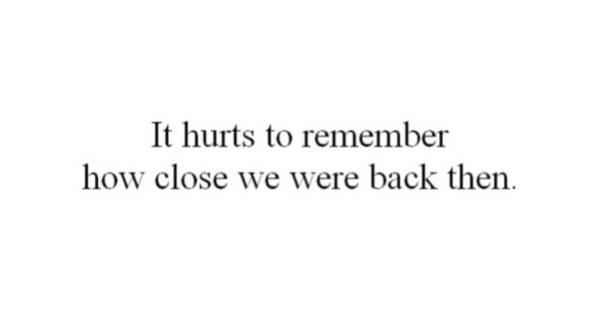 Over time, if it goes unchecked, this can lead to chronic pain. Of course, you’re not likely to experience any negative effects after a few weeks or months of sitting for most of the day. But after a while, it does start to add up.
Over time, if it goes unchecked, this can lead to chronic pain. Of course, you’re not likely to experience any negative effects after a few weeks or months of sitting for most of the day. But after a while, it does start to add up.
It can even cause pain in other parts of the body.
“If hips or glutes aren’t working properly, it can increase impact force all the way to the knees and ankles,” Giordano says. When the big muscle (the butt) isn’t pulling its weight, the pressure and force relocates to these weaker spots. It’s OK for muscles to help each other out. There are plenty of exercises that require a main muscle but recruit a bunch of other ones to help out, too. But what we don’t want is other muscles to have pitch in because the main ones just isn’t activating or has gotten weak.
A weaker butt can interfere with your workouts.
Inhibited gluteus muscles won’t fire properly, and over time, if they’re not activating regularly, they’ll get weaker. This is called muscle atrophy, and can undo any hard work you’ve done to build a strong, sturdy behind. Not to mention make those squats feel way harder than they used to. And not hard in the good, I-crushed-my-workout way, hard in the sense that you’re lack the strength and/or mobility to perform given moves with good form, especially as you get further along in your workout and need to push yourself harder to keep going.
Not to mention make those squats feel way harder than they used to. And not hard in the good, I-crushed-my-workout way, hard in the sense that you’re lack the strength and/or mobility to perform given moves with good form, especially as you get further along in your workout and need to push yourself harder to keep going.
To minimize the effects of sitting, start with your posture.
Adjust your chair so your hips are slightly above your knees, feet resting flat on the floor. Make sure your lower back is supported, either by a sturdy chair back, or a pillow. Keep your shoulders relaxed, but upright, and head directly over the shoulders. Your computer screen should be eye level or slightly below—if it’s too low, your head will bend forward. Your elbows should be about table height, and make sure you’re close enough to your desk that you’re not reaching for the keyboard. If you find that you start out with decent posture but start to droop and fold as the day goes on, build some breaks into your day to walk around and reset yourself.
And regular workouts can counteract all that sitting, too.
As long as you’re activating those glutes outside of your day job, you don’t really need to worry. And there are more than a few ways to get your glute-saving exercises in.
- Giordano recommends Pilates to strengthen your core and improve your posture.
- Barre classes that target the hips and glutes are also great for anyone who’s sitting all day to fire up those muscles and keep them strong.
- You can try this 10-move butt workout that only requires a resistance band.
- This 15-minute dumbbell workout will also work your butt
- At home, keep these butt exercises in your ~ back pocket ~.
- You can also just do some glute squeezes in your seat, Giordano says, “activating the glutes by just squeezing them together.”
If you’re feeling tight, use a foam roller on your hip flexors, quads, and butt once or twice daily, to ease soreness and increase mobility and flexibility.
Causes, Treatment & Pain Relief
Overview
The coccyx, located below the sacrum, can be severely damaged in a fall
What is tailbone pain (coccydynia)?
Tailbone pain, called “coccydynia,” is pain in and around the small triangular bone at the very bottom of your spinal column, above the cleft of your buttocks.
The term “coccyx” comes from the Greek word for “cuckoo” as it resembles a bird’s beak with the tip pointed down. “Dynia” means “pain,” and so “coccydynia” literally means “pain of the coccyx.” And because the bone corresponds to the location of an animal’s tail, it’s called the “tailbone.”
What is the tailbone/coccyx?
Your coccyx is made up of three to five fused vertebrae (bones). It lies beneath the sacrum, a bone structure at the base of your spine. Several tendons, muscles and ligaments connect to it. Both the coccyx and the ischial tuberosities (two bones that make up the bottom of your pelvis) bear your weight when you sit down.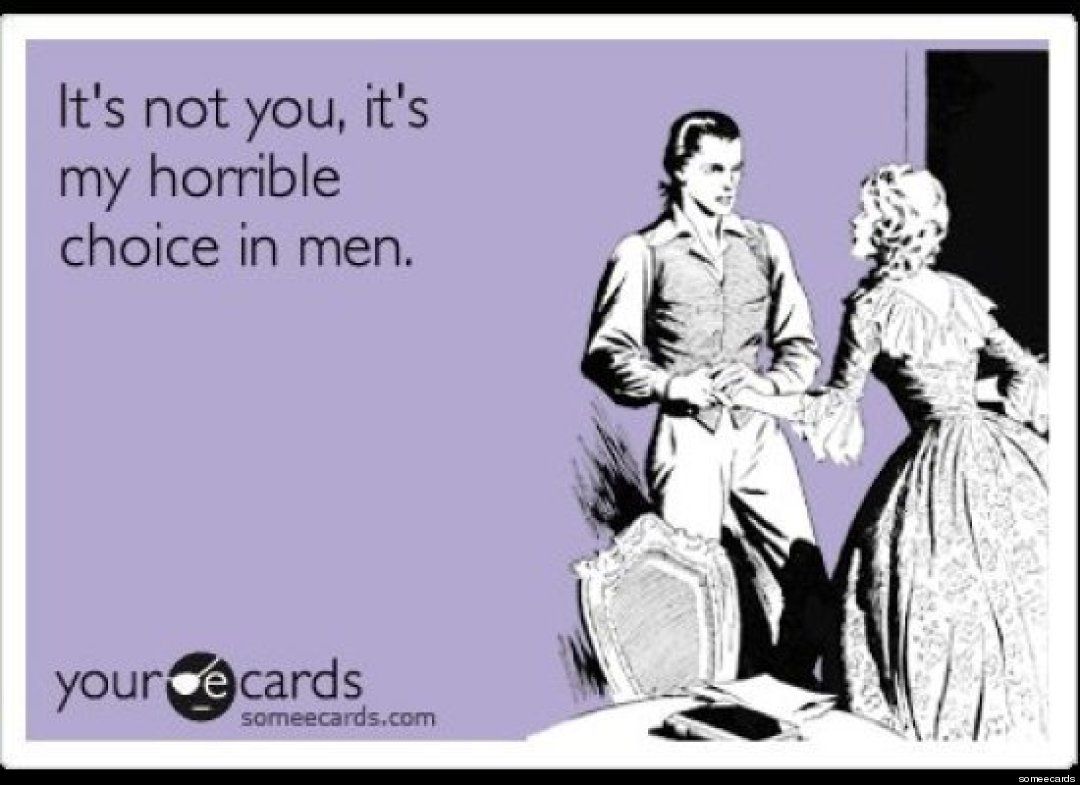 Two-thirds of adults have a coccyx that curves a bit instead of pointing straight down, but one that is curved too far is abnormal and, therefore, painful.
Two-thirds of adults have a coccyx that curves a bit instead of pointing straight down, but one that is curved too far is abnormal and, therefore, painful.
Why does my tailbone hurt?
Tailbone pain ranges from a dull ache to a fierce stab. It can last for weeks, months or sometimes longer. There are three types of events that cause tailbone pain:
- External Trauma: A bruised, broken or dislocated coccyx caused by a fall.
- Internal Trauma: Trauma caused by a difficult childbirth or from sitting on a narrow or hard surface for too long.
- Others: Infection, abscess and tumors.
Interestingly, for one-third of those with coccydynia, the cause is unknown.
Is tailbone pain (coccydynia) permanent?
No. Tailbone pain is rarely lifelong.
How common is tailbone pain (coccydynia)?
Tailbone pain is common.
Women are five times more likely than men to develop coccydynia. Adults and adolescents get it more often than children. Obese persons are three times more susceptible than those at the ideal weight according to the BMI (Body Mass Index) scale. You’re also more vulnerable if you lose weight too quickly.
Adults and adolescents get it more often than children. Obese persons are three times more susceptible than those at the ideal weight according to the BMI (Body Mass Index) scale. You’re also more vulnerable if you lose weight too quickly.
Symptoms and Causes
What causes tailbone pain (coccydynia)?
Falling
Who hasn’t fallen backwards onto their behind? Maybe your feet slipped out from under you on the ice. Maybe you fell off a ladder. Or, maybe you were leaning too far back in your office chair and took a tumble. If you take a really bad fall you can bruise, break (fracture) or dislocate (knock out of place) your tailbone (coccyx).
Repetitive Strain Injury (RSI)
Sports like bicycling and rowing require you to lean back and forth and stretch your spine. Too much of that repeated motion can strain the tissues around your coccyx.
Pregnancy/Childbirth
During the third trimester of pregnancy, a woman’s body secretes hormones that soften the area between the sacrum and the coccyx. This enables the coccyx to move as necessary during childbirth. This is a natural process but, unfortunately, such movement may stretch the muscles and ligaments around the coccyx too far, causing additional pain. Such a strain on those soft tissues keeps them from supporting your coccyx at the correct angle.
This enables the coccyx to move as necessary during childbirth. This is a natural process but, unfortunately, such movement may stretch the muscles and ligaments around the coccyx too far, causing additional pain. Such a strain on those soft tissues keeps them from supporting your coccyx at the correct angle.
Obesity
Extra weight applies additional pressure to the coccyx. This can cause the coccyx to lean backward. Your tailbone will hurt if it is out of position.
Underweight
If you don’t have enough fat in your buttocks to prevent your coccyx from rubbing against the muscles, ligaments and tendons, that can cause. The rubbing inflames the soft tissues.
Sitting
Just this simple act can increase coccyx pain, especially if you’re sitting on a hard or narrow surface. Do your best to get up often, stretch and take a short walk. Better yet, find yourself a softer, more comfortable place to sit or use a cushioned seat.
Cancer
Only in rare cases is tailbone pain a sign of cancer. It is extremely unlikely.
What are the symptoms of tailbone pain (coccydynia)?
- The symptoms of coccydynia include:
- Achy or piercing pain in the tailbone.
- More severe pain when changing from sitting to standing up.
- More severe pain when sitting for long periods of time.
- Pain during bowel movements.
- Pain during sex.
Other related symptoms that may occur with coccydynia include:
- Depression.
- Anxiety.
- Poor sleep.
- Painful buttocks.
- Back pain.
Is tailbone pain (coccydynia) a sign of pregnancy?
As the fetus grows, its weight does put pressure on your pelvic space, causing pain in that general area.
Can tailbone pain (coccydynia) cause rectal pain?
Yes, chronic coccydynia is one of the causes of rectal pain.
Does menstruation cause tailbone pain (coccydynia)?
Tailbone pain is typically worse when a woman is menstruating.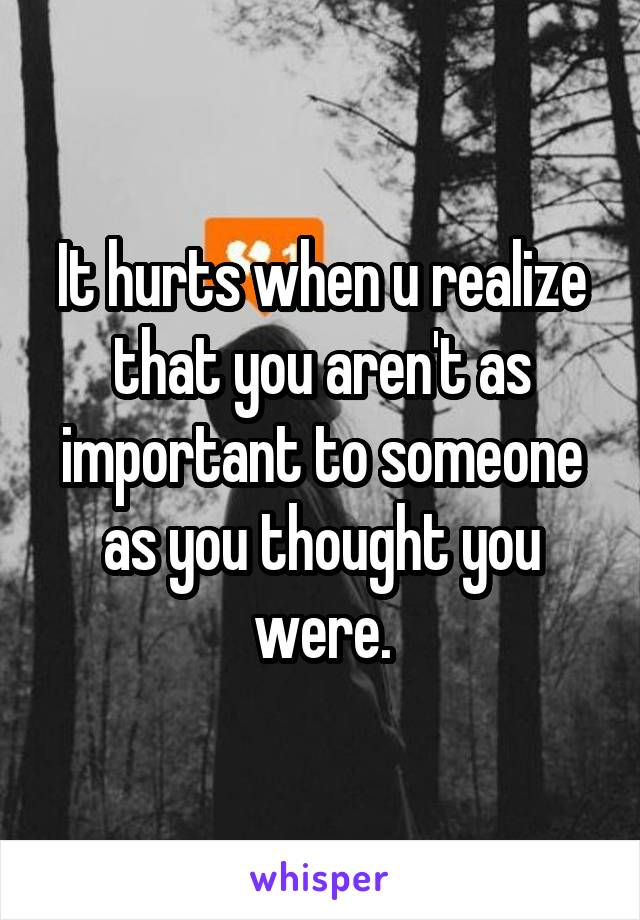
Diagnosis and Tests
How is coccydynia (tailbone pain) diagnosed?
First, after getting your general medical history, your healthcare provider will ask you about any recent traumas including a fall or childbirth. Next he/she will do a visual examination of the area checking for an obvious fracture, deformity, mass or an abscess (infection).
What tests are used to diagnose tailbone pain (coccydynia)?
To check for a fracture:
To check for inflammation and chordoma (a rare type of cancerous tumor of the spine):
Management and Treatment
How is coccydynia (tailbone pain) treated?
Most people recover without undergoing any sort of treatment. Of those who do require treatment, 90% just need to use at-home remedies.
At-home remedies for tailbone pain (coccydynia) include:
- Taking a NSAID like ibuprofen to reduce pain and swelling.
- Decreasing sitting time. Lean forward if you have to sit.

- Taking a hot bath to relax muscles and ease pain.
- Using a wedge-shaped gel cushion or coccygeal cushion (a “donut” pillow) when sitting.
- Taking stool softeners to reduce pain during bowel movements.
- Stretching and strengthening the muscles of your lower back and pelvis.
- Applying hot or cold packs to your lower back. Apply for no longer than 20 to 30 minutes, several times a day.
- Wearing loose-fitting clothing.
Outpatient treatments for tailbone pain (coccydynia) include:
- Blocking the nerve supply of the area — a Coccygeal nerve block — using numbing medications and steroids to decrease the inflammation.
- Massage therapy (usually only provides temporary relief).
- Stretching exercises and posture improvement guided by a physical therapist.
- Acupuncture.
- TENS (transcutaneous electrical nerve stimulation).
Surgical options include:
- Partial coccygectomy (removal of part of the coccyx — extremely rare).

- Total coccygectomy (removal of the entire coccyx — extremely rare).
Recovery time from a coccygectomy can take a few months — maybe a year. Unfortunately, there’s no guarantee that the pain will go away even if the bone is gone. Again, this procedure is rare.
Other symptoms that could occur along with coccydynia, such as depression, anxiety and sciatica, should also be addressed and treated as well.
How is tailbone pain (coccydynia) treated when a woman is pregnant?
When you are pregnant, it’s normal to have tailbone pain. Pain comes from sitting for long periods of time, but can also occur when standing and walking. This is because the growing fetus is putting pressure on the bone. Physical therapists recommend you lie on your side when you sleep and sit on a coccyx cushion. Both will help relieve some of the pain by taking pressure off of your coccyx.
Does walking help tailbone pain (coccydynia)?
Yes. Standing up and walking around decreases pressure on your coccyx, reducing pain.
How should I sleep with tailbone pain (coccydynia)?
Sitting, driving, bending and sleep are all affected by tailbone pain. In severe cases it can vastly decrease your quality of life. Lie on your side to reduce tailbone pain.
Can a chiropractor help with tailbone pain (coccydynia)?
Yes. A chiropractor can help correct the misalignment of a coccyx that leans too far forward or back.
Prevention
How can I reduce my risk of tailbone pain (coccydynia)?
You can reduce your risk of tailbone pain by:
- Avoiding falling. Keep your floors and pathways free of loose objects, debris and cords. Make sure all stairs are well lit and include rails. Don’t walk while looking at your cellphone.
- Avoiding activities that worsen symptoms such as cycling and sitting for long periods of time.
Outlook / Prognosis
What can I expect if I have tailbone pain (coccydynia)?
Dull pain, hard pain, stabbing pain, and any other amount and severity of pain in between. Your pain will be worse when you sit and stand up, and also when you have a bowel movement and have sexual intercourse.
Your pain will be worse when you sit and stand up, and also when you have a bowel movement and have sexual intercourse.
How long will I have tailbone pain (coccydynia)?
Only a few days or weeks, typically. Less time if you use your at-home remedies.
When can I go back to work/school?
Tailbone pain is uncomfortable but it shouldn’t keep you from your daily activities. If it does, contact your healthcare provider and make an appointment right away.
What is the outlook for tailbone pain (coccydynia)?
Tailbone pain is not something you just have to live with. Follow the at-home remedy recommendations and check with your healthcare provider about outpatient options.
Living With
How do I take care of myself?
Don’t sit for long periods of time without standing up, take a short walk or do a couple quick stretches. If you love to ride your bike, cut back for now. Lie on your side when you sleep. Spend more time on your feet! Use the at-home remedies and stay in contact with your healthcare provider.
When should I see my healthcare provider?
See your healthcare provider if your severe tailbone pain does not improve within a few weeks. Also see him/her if your at-home remedies don’t work.
What questions should I ask my doctor?
- What’s the cause of my tailbone pain?
- How long do you think it will take for my pain to go away?
- What over-the-counter medications do you recommend?
- What type/brand of donut cushion do you recommend?
- Which at-home remedies do you recommend?
- Do you think I need surgery?
- What else can I do to decrease my pain?
- Is there a chiropractor you recommend?
- What other medical professionals could help with my tailbone pain?
A note from Cleveland Clinic
Tailbone pain is uncomfortable but temporary. Keep vigilant. Take your medications as prescribed, apply your ice packs, take hot baths, get a donut (the cushion and, well, you might as well get the chocolate glazed one as well) and spend more time on your feet and keep those feet moving.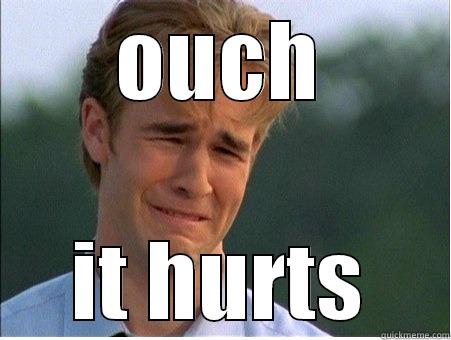 Don’t let your coccydynia get unbearable before you contact your healthcare provider!
Don’t let your coccydynia get unbearable before you contact your healthcare provider!
Your Desk Job Promotes ‘Dead Butt’ Syndrome – Cleveland Clinic
If you sit at a desk all day, you may experience vague discomfort and pain where you sit. Doctors may call this lower cross syndrome, gluteal amnesia or gluteus medius tendinosis.
Cleveland Clinic is a non-profit academic medical center. Advertising on our site helps support our mission. We do not endorse non-Cleveland Clinic products or services. Policy
But another more memorable term is: “dead butt” syndrome.
“When I call it ‘dead butt’ syndrome, patients grasp the concept right away,” says chiropractor Andrew Bang, DC. “I didn’t coin the phrase, but I like to use it because it’s easy to understand.”
In this syndrome, muscle tightness and weakness combine to create an imbalance. Constant sitting weakens the gluteus medius, one of the three primary muscles in the buttock. It also tightens the hip flexors.
It also tightens the hip flexors.
The job of the gluteus medius is to stabilize your hips and pelvis. When it’s weak and can’t function properly, you may experience varying levels of hip and lower back pain when you sit and sometimes when you move.
“Muscle weakness can also compress, pull or pinch the nerves, leading to the numbness related to dead butt syndrome,” says Dr. Bang.
What causes ‘dead butt’ syndrome?
Not surprisingly, sitting for long periods in front of a desk or in a car is the most common cause of dead butt syndrome.
“The weakness is gradual, happening over time,” Dr. Bang says. “Most patients have no idea what they did to cause the pain.”
But the problem also strikes those who are active. Athletes, especially avid runners who forgo cross-training and strength training, can also develop this syndrome, Dr. Bang says.
Can you feel better without resorting to pain medication or surgery? “Most definitely,” he says.
Simple exercises that help
A deep tissue massage can sometimes help combat the problem. But three exercises will often help you conquer the pain and discomfort:
1. Side-lying leg lifts
Repeat 15 to 20 times, in sets of three, every day:
- Lie down on your right side.
- Lift your left leg with your big toe pointing toward the floor, and lift.
- Repeat on your left side, lifting your right leg. Once you are comfortable doing this exercise regularly, you can work with a band or an ankle weight for extra resistance.
2. Clamshell
Repeat 30 to 40 times, in sets of three, every day:
- Lie down on your right side with both knees bent.
- Keeping your feet touching, lift your bent left leg toward the ceiling.
- Repeat on your left side, lifting your bent right leg toward the ceiling.
3. Seahorse pose
This yoga pose, done while sitting on an armless chair, helps stretch your tight hip flexors. Hold the stretch for 20 seconds on each side, three times a day.
Hold the stretch for 20 seconds on each side, three times a day.
Simple changes that ward off pain
Making adjustments in how you work at your desk can also relieve dead butt syndrome — or prevent the problem before it develops.
For example, try sitting for 40 minutes and then standing for 20 minutes. Use the standing time to talk on the phone, do filing or confer with co-workers.
To make standing time even more flexible, Dr. Bang recommends using a sitting/standing desk. These adjustable-height desks come in two designs: a full-size desk or a table-top size that sits atop your traditional desk.
Some employers will purchase a sitting/standing desk for employees if they have a doctor’s order. Dr. Bang tells companies, “It’s a very minimal expense, and a lot cheaper than paying for medical costs.”
Even if your desk chair is ergonomically correct (conducive to good posture), it’s a good idea to change what you sit on periodically. This helps keep the muscles in your buttocks and lower back engaged.
This helps keep the muscles in your buttocks and lower back engaged.
A therapy ball, which lets you shift your weight easily and frequently, and a kneeling chair are both good options.
“Variety is the take-home message,” says Dr. Bang.
90,000 Pain in the anus | Articles of the Medical Center Medklinik
The need for this article has been long overdue. She directly asks herself to the page. The topic of pain in the anus is so relevant, so necessary that there is no point in keeping silent further. Let’s get down to the topic.
But, dear readers, this article is of an overview, thesis nature. Its purpose is to guide the patient in his actions. I recommend everyone who is interested in questions of their health in this area to read thematic articles that reflect the essence of the problem in more detail.
There are many different causes that can cause pain in the anus.
First, let’s isolate the cause of pain in the anus that is not directly related to the anus (anal canal and rectum).
There is such a medical term – proctalgia . It translates literally as pain in the rectum. This pain is associated with problems in the nervous system. It occurs with ostechondrosis of the spine, intervertebral hernias, after stress.Most often, such pain is associated with the tension of the muscle that lifts the anus.
In fact, this is some analogue of radiculitis and it is treated in the same way. When starting the treatment of proctalgia, it is necessary to exclude the presence of other diseases. Examination by a proctologist is mandatory.
Another recurring variant of pain in the anus, weakly associated with the anus itself, is coccygodynia – pain in the coccyx. It can intensify when walking, pressure on the tailbone.This disease has many causes, both neurological and various others. Often in the history of coccygodynia, injuries to the coccyx region are noted, sometimes even its fractures. Almost always, with pain in the coccyx, there was a previous fall on the bottom.
What to do with coccygodynia? In any case, treatment begins after examination by a proctologist. The doctor may prescribe an additional X-ray of the coccyx, recommend examination by other specialists, for example, a neurologist.Treatment is mainly focused on physiotherapy. Some doctors carry out blockades and recommend removal of the tailbone, but such manipulations do not significantly alleviate the patient’s condition.
Now you can get closer to the problems directly related to the anal canal and the anus.
The first place in terms of frequency of occurrence is hemorrhoids ! And there is no getting away from it. According to a study conducted by WHO, about 85% of the population periodically experience problems associated with hemorrhoids.
Just a few words about the essence of the disease. With the development of the human embryo, the veins of the hemorrhoidal plexus are laid in the lower rectum. Under the influence of some factors, the veins of these plexuses expand and form first internal and then external hemorrhoids.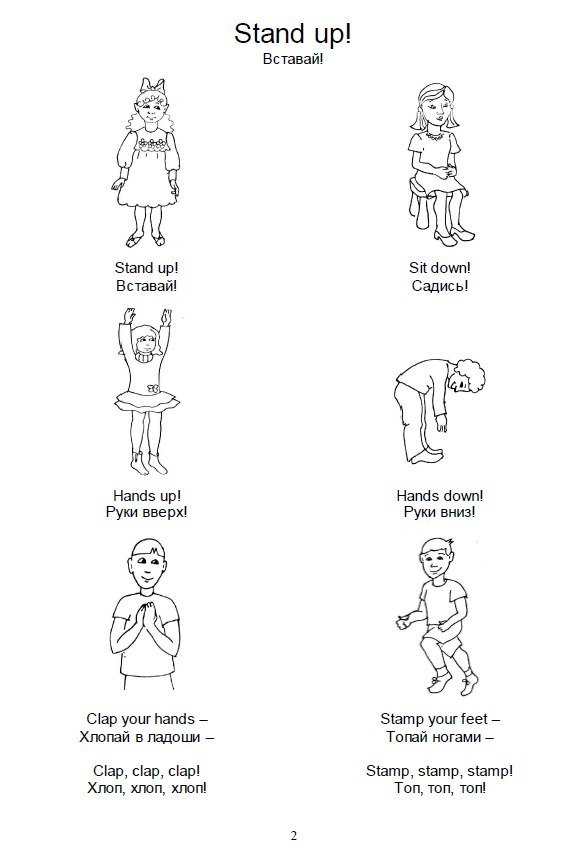 Unfortunately, hemorrhoids can bother not only an adult, but also a child.
Unfortunately, hemorrhoids can bother not only an adult, but also a child.
Dear readers, please note that hemorrhoids develop gradually. And you can never notice the onset of the disease.Once you find discomfort in the anus, a feeling of incomplete emptying after stool, a slight itching in the anus. In most cases, these are the initial manifestations of hemorrhoids! Uncomplicated hemorrhoids don’t hurt!
Hemorrhoids can hurt in the following cases:
- Thrombosis of the external hemorrhoid. In the veins of the external hemorrhoidal plexus, blood coagulates, a thrombus and inflammation occurs. It all starts to hurt. The greater the thrombosis, the stronger the pain.
- Prolapse of internal hemorrhoids. The nodes begin to fall out after stool at the third degree. The disease progresses: “bumps” then fall out when walking and a little effort. First they set themselves, then you need to set them with your hands. The pain during prolapse is usually mild, after reduction it goes away.

- Prolapse and thrombosis of internal hemorrhoids. The situation is serious, it hurts very badly, requires urgent medical attention and qualified assistance.
Medicines in the treatment of hemorrhoids are necessary only to relieve inflammation.Unfortunately, drug treatment of hemorrhoids does not lead to the disappearance of the disease. Hemorrhoids should be removed. Removal methods are different and correspond to different stages of the disease. We will not consider them here.
The second place among the treated patients is currently sphincteritis . He pushed back the anal fissure, which is now in third place. Let me explain the essence of such a disease as sphincteritis – an inflammation of the structures of the anal canal.I will explain the details and details in another article (I will write a little later).
Sphincteritis by itself occurs quite rarely. This requires severe digestive disorders: pancreatitis, gastric ulcer and duodenal ulcer, long-term and persistent gastritis and duodenitis, stool disorders after taking antibiotics, irritable bowel syndrome, severe dysbiosis, infectious diseases and some other pathological conditions. Perhaps we can say that the priest with such diseases does not bother often and severe pains are also not often.With successful treatment of the underlying disease, sphincteritis most often disappears.
Perhaps we can say that the priest with such diseases does not bother often and severe pains are also not often.With successful treatment of the underlying disease, sphincteritis most often disappears.
But! There is one important BUT. All of the above is true if the patient does not have hemorrhoidal disease! Hemorrhoids are an “interesting” sore. Even doctors rarely pay attention to the very essence of the pathogenesis (development) of this disease. Hemorrhoids lead to hemodynamic disturbances (stagnation of blood) in the anal canal and nearby organs. This is especially pronounced with a sedentary lifestyle. And as a result of these stagnant phenomena in the anus, many patients experience inflammation of the anal canal – sphincteritis – even without any digestive disorders.This inflammation is wavy in nature – it periodically increases and decreases under the influence of many factors.
That is, hemorrhoids by themselves tend to lead to inflammation of the anal canal and the appearance of pain, itching, discomfort and other unpleasant sensations. And if a stool disorder also joins (the most common reasons I described above), then the situation arises quite serious. And therefore, dear readers, you already understand that treating sphincteritis without removing hemorrhoids (if any) is not very promising.So we treat them together, and sometimes in turn.
And if a stool disorder also joins (the most common reasons I described above), then the situation arises quite serious. And therefore, dear readers, you already understand that treating sphincteritis without removing hemorrhoids (if any) is not very promising.So we treat them together, and sometimes in turn.
We get to such an “interesting” disease as anal fissure, which also causes pain in the anus. Why did I put the word interesting in quotation marks? Because a crack in the anus is difficult to treat. Fissure is currently the third most common disease causing pain in the anus.
The fissure is characterized by pain during bowel movements and some time after it. At first, the pain is mild, there may be a slight discharge of blood.Over time, the pain intensifies, it can last for several hours. The discharge of blood is often reduced. Increased pain is associated with the development of scarring around the crack and inflammation. Sentinel tubercles appear outside and inside. These are signs of the transition of an acute anal fissure into a chronic stage.
Chronic anal fissure usually does not heal with conservative (drug) treatment. Medical manipulations are required. Here the dependence is simple: the older the crack, the more difficult the manipulation.
A very important point in the treatment of anal fissures: most often they appear in the pathologically altered anal canal against the background of other diseases (hemorrhoids, sphincteritis). It is difficult to treat such cracks.
Cryptitis – inflammation of the crypt (exit of the anal gland into the rectum). Cryptitis pain is intense, associated with stool, sometimes there is mucous or purulent discharge from the anus. The disease is relatively rare and can be treated conservatively. I put cryptite in fourth place only because cryptite can lead to the next, more common problem.
Paraproctitis and rectal fistula . Diseases are not rare, but not so common. Acute paraproctitis is the initial stage in the development of chronic paraproctitis (rectal fistula).
The essence of acute paraproctitis is perfectly described in the book “Fundamentals of Coloproctology” – “acute inflammation of the peri-rectal tissue caused by the spread of the inflammatory process from the anal crypts and anal glands.” Simply put, pus accumulates in the anal glands. There are a lot of him and he is very “evil”.This pus must be released before it causes big trouble.
So dear patients, if you have swelling, induration, fever up to 38 degrees and above, pain in your anus, then go to a hospital where there is a proctology. We’ll have to do the operation urgently!
How to distinguish acute paraproctitis from thrombosis of the external hemorrhoidal node to a non-specialist? It’s complicated. There is a high temperature – go to the hospital!
Rectal fistula .Almost always – the next stage in the development of acute paraproctitis. The fistula itself does not cause pain, it is a pathological course between the rectum and the surface of the body near the anus (sometimes far enough). It happens that the fistula closes for a while (months, years), and then again suppurates and behaves like acute paraproctitis. Only the inflammation is not so strong and the pain is less. Fistulas are treated only promptly in a hospital. Subcutaneous fistulas can be opened on an outpatient basis.
Epithelial coccygeal passage or pilonidal sinus .In fact, this is a narrow cavity in the region of the sacrum and coccyx, formed when embryonic development is disturbed. You can live your whole life with this move and not know about it. If it becomes inflamed, then there is pain in the anus. But it hurts mainly in the coccyx area, there is also a swelling there. In case of acute inflammation, it is urgent to open it. For chronic inflammation – elective surgery in the proctology department.
Stenosis (narrowing) of the anal canal . The crux of the problem is that the anus narrows and passes the feces with difficulty.It goes without saying that when you have a bowel movement, especially if the stool is hard, it can be painful. This condition can be after surgery on the anus, inflammation (sphincteritis, anal fissure), with cancer of the anal canal. Children have congenital narrowing. We’re talking about adults.
In case of inflammation of the anal canal, anal fissure – treatment of the corresponding disease. With cancer of the anal canal – treatment by an oncologist is necessary, timely diagnosis is very important.
Trauma (rupture) of the anal canal .Most often as a result of an accident or sexual activity. The patient’s actions depend on the intensity of the pain syndrome: the more it hurts, the faster you seek help. For minor pain, when there is a tear in the skin covering the anal canal (in fact, an acute anal fissure) – outpatient treatment. In case of significant ruptures (rupture of the sphincter and even levators) – urgent surgical intervention in the department of proctology.
Anal cancer . The onset of the disease proceeds with symptoms such as discomfort, mucus, blood, anal itching.That is, the symptoms are common with various diseases of the rectum and anal canal, therefore early diagnosis is of primary importance in the treatment of the disease.
Some other diseases can also be accompanied by pain in the anus or near it: prostatitis, cysts, teratomas, osteomyelitis and some others. Description of these problems is beyond the scope of this article.
Yours faithfully, Ilyin Vitaly Arkadevich , doctor-proctologist, candidate of medical sciences
Make an appointment Back to the list of publications
90,000 What to do if it hurts to sit on the bottom
If you experience suffering every time a lecture or conference lasts for the second hour on wooden seats, the joy of life is hopelessly poisoned.
Complaining that it hurts to sit on the priest is embarrassing, but it is unbearable to endure the torment. Over time, the discomfort increases in direct proportion to the awkwardness of the absurdity of the situation. Perhaps you will feel better from the realization that almost all thin women face this misfortune.
Causes of painful sensations
It is impossible to make a diagnosis in the article. There are a great many reasons why sitting on the buttocks hurts. Which of them caused your discomfort is unknown.
Normal risk list:
- ● coccyx microtrauma
- ● incorrect posture
- ● diseases of the musculoskeletal system
Thin and rapidly losing weight girls are at risk, because they lack muscle mass in the buttocks.
An effective diet, having a baby, or losing weight due to illness – all this leads to a lack of priests. As a result, it is enough to sit on a hard surface longer than usual and painful sensations appear.
Treatment includes a protein diet for muscle growth and specific exercise. The simplest are squats and walking on the buttocks. Over time, the gluteal muscles grow and become strong. The disadvantage of this method is the need for regular training for several months.
Do you really have to endure pain all this time? Agree, walking on the buttocks with thinness or after frequent injections are not the easiest methods. Often the desire to have beautiful buttocks disappears already on the second day….
There is another way to cope with the misfortune – to wear special underwear that softens the uncomfortable sitting and at the same time gives the priest an appetizing shape. You get rid of bruises on your butt and forget how painful it is to sit on your tailbone, you feel desirable and sexy.
Panties as a pain reliever
Comfortable push-up panties protect the butt thanks to the dense polyurethane foam insert. It softens the contact with hard surfaces and prevents the skin from being squeezed.Butt and tailbone feel like heaven, even if you have to sit in a chair for hours.
Briefs with the effect of enlarging the buttocks relieve pain, give self-confidence and make the silhouette more feminine. The augmentation of the buttocks reaches two centimeters! Panties do not visually differ from ordinary underwear, are invisible under clothes, but they do their job – they save the hostess from bruises, pain and awkwardness. Go to push-up panties catalog >>
90,000 Severity in the lower abdomen – causes of appearance, in what diseases it occurs, diagnosis and treatment methods
IMPORTANT!
The information in this section cannot be used for self-diagnosis and self-medication.In case of pain or other exacerbation of the disease, only the attending physician should prescribe diagnostic tests. For a diagnosis and correct treatment, you should contact your doctor.
The severity of the lower abdomen – the causes of the appearance, with what diseases it occurs, the diagnosis and methods of treatment.
Feeling of heaviness, bloating, pulling pain in the lower abdomen are subjective sensations and require detailed diagnosis.The abdomen is a concentration of vital organs that are close to each other, which makes it difficult to determine the source of discomfort. The situation is aggravated by the fact that it is difficult for a person to describe the feelings experienced and indicate the exact location of pain.
Varieties
Often the severity in the lower abdomen is accompanied by pain, a feeling of fullness, and sometimes discharge from the genitals or rectum.
The pain can be acute, paroxysmal, pulling, have different localization (right, left or center) and radiate to the lower back, scrotum, rectum or vagina.
Possible causes of severity in the lower abdomen
The severity and pulling sensations in the lower abdomen are often physiological in nature and occur during pregnancy . Discomfort develops due to the enlargement of the uterus, which presses on neighboring organs – the bladder, intestines. In addition, the enlarged uterus stretches the ligaments and abdominal muscles, causing mild pain. However, the combination of severity with severe pain can be a symptom of an ectopic pregnancy or early placental abruption.
Also common causes of severity in the lower abdomen include premenstrual syndrome and dysmenorrhea. Premenstrual syndrome occurs in more than half of women. There is no clear clinical picture of this condition. Often it is accompanied by heaviness and pain in the lower abdomen, mood swings, tearfulness, headache. These symptoms disappear after the onset of menstruation.
At the heart of premenstrual syndrome are changes in hormonal levels.
At dysmenorrhea , the pain syndrome is more pronounced, and the cause may be a violation of blood circulation in the pelvic region. Vascular spasm and venous congestion lead to irritation of the nerve endings, which is accompanied by a pulling pain. Similar sensations are characteristic of the period of perimenopause , which occurs from the moment of the first menopausal symptoms and lasts one to two years after the last menstruation. During this period, the level of estradiol in the blood fluctuates greatly, which can cause heaviness in the lower abdomen and lower back pain.
Gynecological diseases are almost always accompanied by pain and heaviness in the lower abdomen. Most often these are inflammatory processes of the pelvic organs: adnexitis, endometritis, salpingitis, parameter , etc. As a rule, these pathologies develop as a result of an ascending infection. The main pathogens are sexually transmitted microorganisms, or microorganisms that live in the external genitalia and anus. Additional factors contribute to the development of inflammation: frequent change of sexual partners, previous infectious processes, abortion, use of intrauterine devices, etc.etc.
Inflammatory diseases of the pelvic organs are accompanied by a pulling pain radiating to the lower back and lower extremities, discharge (sometimes blood) from the vagina, and fever. Symptoms Endometriosis , which often causes pulling pain, worsens before menstruation begins. The severity of the lower abdomen is sometimes the only manifestation of ovarian cysts and uterine fibroids .
Pelvic pain has become a common problem , which can be caused by urological, gynecological, proctological and vascular disorders.
Pulling and aching pains can appear with irritable bowel syndrome and are accompanied by diarrhea or constipation, bloating and flatulence. At night, the feeling of discomfort goes away.
With diseases of the genitourinary system, the severity of the lower abdomen develops very often. When a stone blocks the ureter or urethra, the outflow of urine is impaired and there is a pulling pain in the groin. With complete obstruction, pain can take on a sharp unbearable character.Violation of the outflow of urine can also be a consequence of other diseases: hyperplasia or cancer of the prostate gland, strictures of the urethra, etc. In these cases, pain appears in the perineum, in the sacrum or in the lower abdomen. Often they are given to the groin and external genitals.
Often, a feeling of heaviness in the lower abdomen can be a manifestation of osteochondrosis of the lumbar spine. Aching pain usually occurs while walking or in a sitting position.At night, the pain syndrome subsides.
Diagnostics and examination
Diagnosis of pathologies associated with pain and a feeling of heaviness in the lower abdomen is difficult.
Since the clinical manifestations of the diseases do not correspond to their severity, delay in treating the abdominal organs is fraught with serious consequences.
After interviewing and examining the patient, the doctor gives a referral for a clinical blood test and a general urine test.
90,000 Stomach pain
Abdominal pain is one of the most common reasons for seeking emergency medical care and, in some cases, one of the symptoms of acute surgical diseases of the abdominal cavity (acute appendicitis, perforated stomach ulcer, intestinal obstruction, etc.), requiring an emergency referral of the patient to a surgical branch.
Etiology
The main causes of pain localized by patients in the abdominal region are as follows:
- Diseases and injuries of the abdominal organs (stomach, gallbladder, intestines, uterus and its appendages, etc.)).
- Diseases and injuries of the retroperitoneal organs (kidney, pancreas, retroperitoneal hematomas with fractures of the pelvic bones and kidney injuries, dissecting aneurysm of the abdominal aorta).
- Thrombosis and embolism of the vessels of the abdominal cavity.
- Irradiating pain in diseases of the chest organs (croupous pneumonia, pleurisy, basal pleuropneumonia, myocardial infarction, pericarditis).
- Diseases and injuries of the anterior abdominal wall (abdominal hernias, spontaneous and traumatic ruptures of the vessels of the anterior abdominal wall with the formation of hematomas in its thickness, phlegmon of the abdominal wall).
- Irradiating pain in diseases and injuries of the spine and spinal cord (fractures of the lower thoracic and lumbar vertebrae, tumors of the spinal cord and crises with dorsal tabes, lumbosacral radiculitis, etc.).
Localization of pain in most cases indicates a lesion of one or another organ.
So, pain in the right upper abdomen is observed mainly in diseases of the liver, gallbladder and biliary tract, the head of the pancreas, duodenum, ascending colon, right kidney and right-sided phrenic pleurisy.
Pain in the upper left abdomen is characteristic of diseases of the stomach, pancreas, left half of the large intestine and left kidney.
The most common cause of pain in the right lower abdomen is acute appendicitis. It can also be caused by lesions of the blind and terminal ileum, diseases of the internal genital organs in women.
The causes of pain in the left lower abdomen are usually diseases of the sigmoid colon and internal genital organs.
However, in some cases, the localization of pain to patients does not coincide with the topography of the affected abdominal organ. So, most patients with acute appendicitis during the first hours from the onset of the disease note pain not in the right iliac region, corresponding to the location of the appendix, but in the epigastric region. Sometimes the diagnosis of acute appendicitis can be made precisely by the characteristic movement of pain from the epigastrium or umbilical region to the lower right quadrant of the abdomen.With a disturbed ectopic pregnancy and significant hemorrhage into the abdominal cavity, the main complaint of patients is often excruciating pain in the epigastrium and both hypochondria, radiating to the neck and shoulder joints. This is due to the accumulation of blood in the upper abdomen, poured out during the rupture of the pregnant fallopian tube, and irritation of the diaphragmatic peritoneum.
Irradiation of pain is characteristic of a number of diseases and lesions of certain organs. So, pain in the right hypochondrium, emanating from the gallbladder and biliary tract, as a rule, radiates upward, into the right half of the chest and the right shoulder.Pain in the epigastrium with stomach ulcers and pain in acute pancreatitis are given to the back and lower back. Pain in both iliac regions, caused by diseases of the internal genital organs in women, usually have a characteristic downward irradiation with a feeling of pressure on the bladder and rectum.
A number of acute processes in the abdominal cavity are accompanied by a characteristic isolated irradiation of pain to the area of the shoulder joint in the complete absence of any changes in the joint itself or its surrounding tissues (the so-called phrenicus symptom).This complaint sometimes comes to the fore, but even if the patient himself does not declare this, one should actively ask him about such irradiation of pain. Shoulder phrenicus symptom is characteristic of those diseases in which there is a sudden outpouring of blood or stomach contents into the abdominal cavity and irritation of the diaphragmatic peritoneum. It often accompanies hemorrhages caused by rupture of the fallopian tube, liver, spleen, and is extremely common with perforation of stomach and duodenal ulcers.
Diagnostics
Determination of the nature of abdominal pain greatly contributes to the correct diagnosis. It is necessary to find out whether the pain began suddenly or increased gradually. So, a sudden acute, so-called dagger, abdominal pain is observed with perforation of stomach and duodenal ulcers. The sudden nature of abdominal pain is characteristic of some types of acute intestinal obstruction (volvulus, entrapment, nodulation). Abdominal pain suddenly begins with acute pancreatitis, intestinal thrombosis, rupture or torsion of ovarian cysts in women.The sudden onset of pain is extremely characteristic for hepatic and renal colic. Less acutely the pain syndrome increases with intestinal obstruction; a gradual increase in pain is also characteristic of acute inflammatory diseases (acute appendicitis, cholecystitis, inflammation of the uterine appendages).
A clear connection between pain localized by the patient in the epigastric region with food intake, a gradual increase in pain soon after eating or its occurrence at night, a seasonal spring-autumn exacerbation of the process are characteristic of gastric ulcer and duodenal ulcer.Prolonged or constant pulling, pressing pain in the epigastric region with a feeling of distention of the stomach in elderly patients, combined with weight loss, makes it possible to suspect a neoplasm of the stomach.
Observation of the patient’s behavior and posture during an attack of acute abdominal pain is of great diagnostic value. Patients with exacerbation of peptic ulcer disease usually sit or lie, hunched over, with their legs brought to the stomach. Patients with perforation of gastric and duodenal ulcers usually groan or scream from intense pain, but maintain a forced horizontal position of the same type, since an attempt to change it leads to a sharp increase in pain.The same situation is typical for patients with local or diffuse peritonitis of various etiologies, with the difference that independent (independent of examination) abdominal pains are usually less intense and the patients are relatively calm.
For profuse intra-abdominal hemorrhages (ectopic pregnancy, ruptures of the liver, spleen), in some cases, a persistent attempt of patients to raise their heads or sit up is characteristic (the so-called “vanka-stand” symptom, caused by excruciating pain during breathing due to irritation of the diaphragmatic peritoneum with accumulated blood).
Sharp and constant anxiety of patients, groans or screams, continuous attempts to change the position of the body (the horizontal position is replaced by walking, sitting) are very often observed with hepatic and renal colic. These attacks are also characterized by sudden development and termination.
Patients in the early stage (before the development of intestinal necrosis and peritonitis) of acute intestinal obstruction caused by compression of the intestinal loop with a plug, its volvulus, nodulation or intussusception, behave extremely anxiously.However, for these cases, in contrast to colic, the pain is characterized by cramping and their replacement by periods of relative well-being, due to the termination of the peristaltic wave.
In some cases, acute abdominal pain is the leading complaint of patients with acute pathology of the chest organs (basal pleuropneumonia, gastralgic form of myocardial infarction, etc.). Often, it is accompanied by the appearance of objective signs characteristic of acute surgical diseases of the abdominal organs, and, above all, limited tension of the muscles of the abdominal wall.A sharp stretching of the liver capsule with a rapid increase in right ventricular failure can cause pain, intensifying on inspiration, on palpation in the right hypochondrium and simulate acute cholecystitis. However, the constant presence of subjective and objective signs of damage to the respiratory and circulatory organs (shortness of breath, cough, hemoptysis, heart rhythm disturbances, the presence of wheezing in the lungs and dullness of the percussion sound over their areas) usually makes it possible to correctly interpret the nature of acute abdominal pain.Nevertheless, the true nature of the disease in a number of cases can be revealed only with an inpatient examination of the patient and the use of a number of special research methods (ECG, X-ray examination of the chest organs).
A careful and comprehensive assessment of abdominal pain and patient observation therefore provides significant information. Thorough questioning and a full objective examination of a patient complaining of acute abdominal pain can solve the main problem facing the doctor at the prehospital stage – to identify patients with acute surgical diseases of the abdominal organs.All patients with suspected peritonitis, intestinal obstruction, mesenterlal thrombosis, acute appendicitis, cholecystitis, pancreatitis, and renal colic are subject to emergency hospitalization in a surgical hospital. Patients with cholelithiasis and urolithiasis, gastroenteritis, etc., that is, with diseases that cause abdominal pain, but without signs of acute abdomen, can be hospitalized in a planned manner.
Do not self-medicate.
Seek medical attention promptly.
Tailbone hurts when you sit and stand up: causes, symptoms and treatment
Coccyx pain is an unpleasant phenomenon that is familiar to many sedentary occupations. Basically, the tailbone hurts when you sit and stand up, while the pain is not intense, and it is for this reason that little attention is paid to the symptom.
Why tailbone hurts
To understand why the tailbone begins to hurt when you sit and get up, it is worth considering its function in the body.This is a rudimentary part of the spinal column, consisting of 3–6 vertebrae, to which muscles and ligaments from the pelvic organs are attached. Therefore, the coccygeal part of the spine is closely connected with these organs and reacts to any of their pathological conditions. The tailbone performs an important function – it partially distributes the load on the body and at the same time is its vulnerable part. If your tailbone hurts when you sit and stand, damage from injury or illness is a common cause.
Classification of pain sensations
Physicians divide pain into two types, which are due to the localization of its source:
With coccygodynia
If the tailbone hurts, it hurts a person to sit and stand up, the cause of the discomfort may be the tailbone itself.Pain syndrome in this case appears for the following reasons:
- joint problems;
- salt accumulation;
- neuralgia.
Coccygodynia requires modern diagnostic methods to accurately confirm the causes of pain.
Reflected pain
These include pain syndrome, the cause of which is not the tailbone itself. In this case, the tailbone hurts when you sit and stand up, due to the reaction of the spine to problems in the organs associated with it:
- Spinal diseases: osteochondrosis, displacement of intervertebral discs, etc.e. The vertebral column is a single whole, so pains in any part of it can radiate to the tailbone when you sit and stand up.
- Diseases of the rectum: in this case, the pain is called anorectal. Hemorrhoids, proctitis and other damage to the rectum in any part of it are accompanied by pain in the coccyx when sitting and straining.
- Diseases of the genitourinary system: the tailbone is associated with them by nerve bundles, therefore it hurts when sitting and bending, accompanied by aching pain in the pelvic region.Such pains are characteristic for prostatitis, endometritis, cystitis and other common diseases of the pelvic organs.
- Pregnancy: In this case, the tailbone hurts when you sit and stand up, in the last months of pregnancy, due to the increased load and natural deflection back under the pressure of the uterus.
- Postpartum period: The tailbone may deviate backward during labor, causing pain. If we are talking about reflected pain in the coccyx, no less careful diagnosis is required than with coccygodynia.
Possible causes of pain in the coccyx
The pain characteristic of the coccygeal zone when changing or adopting a certain position has a very extensive classification according to signs and reasons. The patient should pay attention to exactly when the pain in the coccyx appears, and tell the neurologist about this .
When getting up
Often the tailbone does not hurt when you sit, but when you get up, it can make itself felt with a lumbago, sharp or stabbing pain, as well as constant aching.The following conditions are common causes of this reaction:
- Consequences of surgical interventions on the small pelvis: stitches, scars and adhesions can hurt. This is the most common cause of this symptom.
- Pathologies of the upper spine: for example, with osteochondrosis or other similar disease, it often gives off to the tailbone when standing up.
- Descent of the pelvic organs: observed as a postpartum process in some cases.
- Injuries: due to a fall or impact in the coccyx area, cracks and damage to soft tissues may remain.
At the moment of getting up, the tailbone hurts due to the change in load and the impact on the nerve associated with the problem organ or area.
When seated
If the tailbone hurts when you sit or lie down, the reasons can be both serious and easily removable:
- Trauma: A sudden onset of pain is often indicative of an old trauma of many years that the patient was unaware of – it makes itself felt after the formation of scars and other processes.
- Previous surgery: can cause changes in the intestines that lead to this unpleasant symptom.
- The habit of sitting on a soft surface: it happens that the tailbone hurts when you sit, and disappears when you get up, if a person who is accustomed to a soft surface sat on a hard chair.
- A sedentary lifestyle: when you sit for a long time, the tailbone often hurts from the load, which is why it is worth periodically doing warm-ups. This applies not only to office workers, but also to drivers, cyclists, and horse riding enthusiasts.
- Uncomfortable Furniture: Furniture that is unsuitable for humans or of poor quality can cause this symptom.
In some cases, the patient may be able to help the doctor make a diagnosis more quickly. Therefore, if the tailbone hurts when you sit or stand up, it is worth remembering about the injuries suffered, surgical interventions and other moments that could cause pain.
Which doctor should I contact
Before deciding what to do if your tailbone hurts when sitting or getting up, you should consult your doctor.This is a very complex symptom that requires special research. Therapist first sends the patient to the proctologist, and if the latter does not find any pathologies, an examination is required by the surgeon and by the neurologist .
Methods of diagnosis and treatment
If the tailbone hurts when you sit and stand up, a comprehensive examination is necessary. The following are used today as effective diagnostic methods:
- X-ray : allows you to identify pathologies and injuries of the coccygeal bone;
- ultrasound examination: it is necessary to detect pathologies of organs and soft tissues of the small pelvis;
- Intestinal examination using endoscopic and non-endoscopic techniques: this is an effective way to confirm the diagnosis with a proctologist;
- tomography: necessary for a detailed examination of already identified pathologies.
A patient with this symptom needs a consultation of a number of specialists: proctologist, surgeon, neurologist, gynecologist or urologist . How to treat the tailbone, which hurts when you get up and sit, the doctor decides on the basis of the diagnosis. The following treatment methods can be prescribed to the patient:
- Medication: in this case, pain relievers and anti-inflammatory drugs are prescribed to relieve swelling and spasms.
- Physiotherapy: gentle action on the muscles improves blood flow to the coccygeal zone and accelerates recovery.
- Massage: aimed at improving blood circulation, suitable for chronic pain.
- Exercise therapy: helps not only improve the patient’s condition, but also prevent the recurrence of the disease.
- Surgery: performed only in extreme cases, when other methods of treatment have not brought the expected result for a long time.
It is worth knowing that if the tailbone hurts when you sit and stand up, especially badly, and the disease is in the acute phase, some treatment methods are contraindicated.Therefore, it is strongly discouraged to use them without the knowledge and consent of a doctor.
90,000 Anti-inflammatories for perineal pain relief after childbirth
What is the problem (question)?
After giving birth, many women experience pain in the perineum, the area between the anus and vagina. This Cochrane review addresses the question of whether this pain can be reduced with a single dose of a non-steroidal anti-inflammatory drug (NSAID) such as aspirin or ibuprofen.
Why is this important?
Some women experience particularly severe perineal pain after childbirth if the perineum is torn or an incision is required (a procedure known as an episiotomy). Even women who gave birth without a perineal tear or surgery often experience some perineal discomfort that can affect a woman’s activity and her ability to care for her baby.This review is part of a series of reviews on the effectiveness of various medications used to relieve pain in perineal pain immediately after childbirth. This review looks at NSAIDs such as aspirin and ibuprofen.
What evidence have we found?
We found 28 studies involving 4181 women, in which 13 different NSAIDs (aspirin, ibuprofen, etc.) were studied. We included studies conducted up to March 31, 2016. The studies we found included only women who had suffered perineal trauma and were not breastfeeding.The studies were conducted between 1967 and 2013 and were small and of poor quality.
Studies have shown that a single dose of NSAIDs provide greater pain relief, when assessed at 4 hours (low-quality evidence) or 6 hours (very low-quality evidence) after ingestion, compared to placebo (dummy pill) or no treatment in lactating women who have suffered perineal trauma during childbirth. Women who received single doses of NSAIDs also required less additional pain relief at 4 hours (low-quality evidence) or 6 hours (low-quality evidence) after the initial dose, compared with women who took placebo or did not receive treatment.Not all studies evaluated the adverse effects of the intervention, but some reported adverse effects in mothers, such as drowsiness, headache, weakness, nausea, and stomach discomfort. However, there was no clear difference in the incidence of adverse effects at 6 hours post-dose between groups (very low quality evidence). One small study reported no adverse effects in mothers 4 hours after taking the drug (low-quality evidence).None of the studies evaluated possible adverse effects in children.
NSAIDs also appeared to be better than paracetamol in pain relief when assessed 4 hours (but not 6 hours) after drug administration, although such comparisons were made in only three small studies. Women who received a single dose of NSAIDs also required less additional pain relief 6 hours (but not 4 hours) after taking the medication, compared with women who received paracetamol.There were no adverse effects in mothers 4 hours after taking the medication (according to one small study). Three small studies reported adverse effects in mothers assessed 6 hours after taking the drug, but there were no clear differences between groups. Adverse effects in children were not reported in any of the included studies. Also, all studies excluded women who were breastfeeding.
Comparisons between different NSAIDs and different doses of the same NSAID did not show any clear differences in their effectiveness for the main outcomes assessed in this review.However, there was little data available for some NSAIDs.
None of the included studies reported any of the secondary outcomes considered in this review, including: increased length of hospital stay or readmission for perineal pain; breastfeeding, perineal pain 6 weeks after childbirth, women’s opinions, postpartum depression, and disability due to perineal pain.
What does this mean?
For women who are not breastfeeding, a single dose of NSAIDs may relieve perineal pain when evaluated 4 and 6 hours after taking the medication.Paracetamol can provide similar benefits. No serious side effects were reported, but not all studies addressed this issue. There are no data available for breastfeeding women and these women should seek help as some NSAIDs are not recommended for breastfeeding.
Why the tailbone hurts and what to do about it
The tailbone is the lowest, tail-like part of the spine, consisting of 3-4 fused vertebrae.
Photo: Maryna_Melnyk / Depositphotos
The tail is very small.Some even consider it a rudiment, that is, a part of the body that we inherited from some tailed ancestors and is absolutely unnecessary for modern man. However, the tailbone has a number of important functions . For example, it helps stabilize your weight when you are sitting. In addition, the tailbone holds many tendons, muscles and ligaments that are involved in the genitourinary system and intestines. Also, part of the muscle bundles of the gluteus maximus muscle is attached to it – the one that is necessary for hip extension.
Given all this functional load, it is not surprising that sometimes the tailbone begins to ache. And then it makes itself felt with bouts of rather severe pain. There can be many reasons for coccygodynia (the so-called coccyx pain in scientific language).
When you need to see a doctor as soon as possible
Pain in the coccyx is rarely dangerous. In most cases, it goes away by itself – however, sometimes after weeks or even months . But there are situations that require medical supervision.
Immediately contact a traumatologist, or even call an ambulance if pain in the tailbone appeared after a fall or other blow and is accompanied by:
- numbness in the lumbar region and pelvis;
- extensive bruising;
- noticeable discomfort when moving, loss of coordination;
- Distinct tingling in the coccyx and surrounding areas.
There is no need to call an ambulance, but plan a visit to a physician or surgeon in the near future if:
- pain in the coccyx does not go away for a week or two;
- painful sensations that decrease and seem to disappear, then return again;
- In addition to pain, you have a fever;
- You see other strange symptoms – back pain, lack of coordination, discomfort in flexion-extension of the legs, constipation, and so on.
Most likely, nothing terrible is happening to you. But the doctor must conduct an examination to rule out potentially dangerous diseases.
Why tailbone hurts and what to do about it
Here are some of the most common causes of coccygodynia.
1. Fall or hit
Any fall on the buttocks – no matter whether you jumped on a skateboard or slipped in the ice – can potentially lead to a bruise, dislocation, or even a fracture of the coccyx.
What to do
If pain in the tailbone appeared after a fall or blow and it really bothers you, look to the therapist, traumatologist or surgeon. X-rays may be needed to check the condition of this part of the spine.
2. Prolonged sitting position
The tailbone often starts to hurt if you sit on a hard bench for too long or, on the contrary, in an overly soft chair. An uncomfortable posture is also an important factor in the onset of coccygodynia.
What to do
More often than not, it is enough to change the position for the pain to decrease or disappear altogether. For the future, try not to sit in one place for a long time. This puts more stress on the spine and is not conducive to overall health.
3. Pregnancy and childbirth
The tailbone, as well as the muscles and ligaments that it holds, become elastic and flexible by the end of pregnancy. This allows the lower spine to bend and pass through the baby’s pelvis during labor.
However, sometimes during childbirth, excessive stretching of the muscles and ligaments occurs. Because of this, young mothers experience pain in the coccyx area.
In addition, during difficult natural childbirth, the tailbone can be damaged – up to cracks or fractures. This happens very rarely, but this situation should also be borne in mind.
What to do
Monitor painful sensations. If they do not decrease by 2-3 days after childbirth, be sure to consult with the observing doctor and follow his recommendations.
4. Repetitive stress injury
The risk of coccygodynia is increased if you regularly practice sports such as cycling or rowing. During exercise, the body tilts forward cyclically. This stretches the muscles and ligaments around the tailbone.
You may not notice this at first, but over time, the voltage builds up. As a result, it can damage muscles and ligaments that no longer hold the tailbone in the correct position. This will cause chronic pain and discomfort.
What to do
See a general practitioner or traumatologist. The healthcare provider will suggest symptomatic treatment to help relieve pain. You may be prescribed muscle relaxants, drugs that help your muscles relax. Massage can also be effective.
5. Overweight or underweight
If you are overweight, your body may put excessive pressure on your tailbone when you are sitting.
Being too thin is also not easy: they do not have enough gluteal fat to relieve the pressure of the tailbone on the surrounding tissues.All this can cause coccygodynia.
What to do
First of all – bring your body weight to a healthy norm. The second important recommendation has already been voiced above: try not to spend too much time sitting.
6. Aging
With age, the coccyx hardens, becomes more rigid and can painfully press on the surrounding tissue.
Intervertebral discs also wear out over the years – including the one with which the tailbone is attached to the spine.As a result, any load on the “tail” becomes painful.
What to do
See a physician. Your doctor will advise you on how to relieve pain. Perhaps he will prescribe painkillers, including in the form of injections. Physical therapy (such as warming up or acupuncture) and exercise therapy can also be helpful.
7. Infections and tumors
Extremely rare, but still possible option. Coccygodynia can be provoked by infections that have arisen at the base of the spine or the soft tissues surrounding the coccyx.The culprit is also cancer – bone or metastatic (developed in some other part of the body and metastases to the tailbone).
What to do
If you have no idea why your tailbone hurts, but you experience significant discomfort for more than 1-2 weeks, a consultation with a therapist is required. However, we already wrote it above.
How to reduce coccyx pain at home
We repeat once again: in the vast majority of cases, coccyx pain goes away by itself. Until it disappears, you can relieve the condition in the following ways:
- Take an over-the-counter pain reliever.For example, based on paracetamol or ibuprofen.
- Apply a cold compress to the tailbone area for 10-15 minutes. This can be a heating pad with cool water or an ice pack wrapped in a thin cloth.
- Try to sit less and move more.
- Use your fingers to self-massage the area around the tailbone. This will help relax tense muscles.
- If your health condition allows, do Pilates or yoga. These techniques include stretching exercises to help relax the muscles surrounding the tailbone.

 Massaging the muscles attached to the tailbone might help ease pain. Manipulation is typically done through the rectum.
Massaging the muscles attached to the tailbone might help ease pain. Manipulation is typically done through the rectum.


